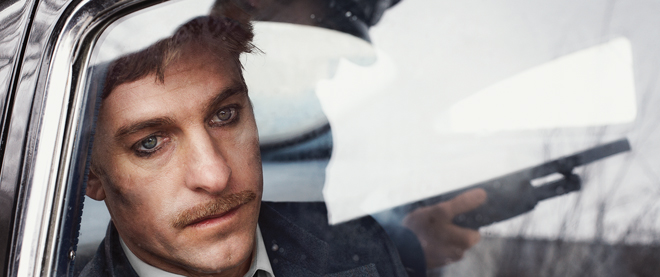Edwin Boyd, Canada’s notorious bank robber, makes the big screen at last
The real life anti-hero of ‘Citizen Gangster’ was no Clyde Barrow—just a failed actor
Share

Edwin Boyd wanted to be famous. He succeeded, up to a point, by becoming the most notorious bank robber the country has ever seen—not quite the Hollywood star of his dreams. After quitting his job as a Toronto transit driver and making a stab at an acting career, the Second World War veteran staged a string of flamboyant holdups between 1949 and 1951 that made him a front-page folk hero. Inspired by James Cagney gangster movies, Boyd treated his armed withdrawals as performance, wearing theatrical greasepaint, vaulting bank counters, and flirting with tellers. But after two jailbreaks and the largest manhunt in Canadian history, he didn’t get a Hollywood ending. Instead of being cut down in a Bonnie and Clyde blaze of gunfire, he surrendered without a struggle when police surprised him asleep in bed. After 15 years in prison, he was paroled to Vancouver Island—forced to mask his celebrity with an assumed name—and cared for the disabled until his death, in 2002, at the ripe age of 88.
Finally he’s found his way onto the big screen, in Edwin Boyd: Citizen Gangster, a stylish and powerful feature debut by Canadian writer-director Nathan Morlando that opens this week. Portrayed as a dashing depressive by Scott Speedman (Barney’s Version), this sad outlaw is a far cry from James Cagney or Clyde Barrow. Afflicted by post-traumatic stress disorder, he’s an overzealous breadwinner addicted to the rush of robbing banks. In the holdups, set to a pounding score of contemporary rock, he waves a gun around—a souvenir German Luger—but shoots no one. A single bullet is fired when one of Boyd’s gang kills a cop then feels an instant shudder of remorse. How Canadian is that?
The movie, which won best Canadian first feature at the Toronto International Film Festival last year, received mixed reviews in the U.S., where it was released last month as Citizen Gangster—Boyd’s name, which would draw a blank across the border, was erased from the title. American critics seemed puzzled that a bank-robber movie could be so “melancholy,” a word that recurs in positive and negative notices. “This unusually cerebral crime movie chooses psychic pain over public-enemy thrills,” said the New York Times. “It was a perfect line,” says Morlando. “That was the intention. I guess they’re just not into that. It’s like, ‘Oh man, why didn’t he do more bank-robbing in the film?’ ”
Morlando spent a decade making the movie, an obsession he traces back to growing up in Toronto’s east end where he heard his parents reminisce about the Boyd gang, which included Lenny Jackson, Val Kozak and Willy Jackson. “My mum remembers the day Lenny and Val were hung,” he says, referring to their midnight execution at the Don Jail just months after they’d killed the policeman. “It was a tragic day for them. The public was very upset. What isn’t in the film is that these poor guys strangled for 43 minutes before dying. There was a vigil of 500 people outside the Don Jail.”
The urge to re-explore the Boyd legend—the subject of two books and a 1982 TV docudrama starring Gordon Pinsent—occurred to Morlando while he was studying the anti-hero in a graduate course on existentialism and religious studies at York University. He tracked down Boyd and spent years cultivating a long-distance relationship with him by phone. He also met Boyd’s estranged daughter, Carolyn, whose girlhood memories provided some authentic details—including a scene where laundered banknotes catch fire in the oven, drying on a cookie rack, after the kids help dad wash and “age” the loot.
Carolyn, says Morlando, wanted the film “to capture her family’s pain and loss,” and felt it did. She also led the director to her mother, Doreen (now deceased), sublimely portrayed by Kelly Reilly as an English rose torn between love and despair. “At first I was enamoured with Boyd,” says Morlando, “When I sat down with Doreen, she cried and said she’s loved no one more than Eddie. Then I realized this was a tragic love story.”
Inspired by the romance of an outlaw folk hero, Morlando ended up making a movie about emotional consequences—not the legacy Boyd had in mind, but a punishment that suits the crime.